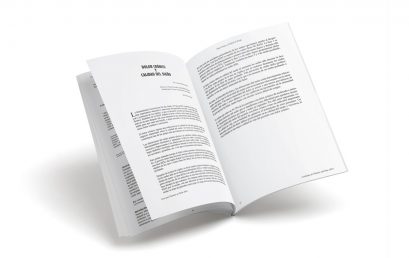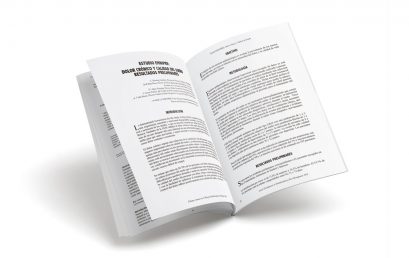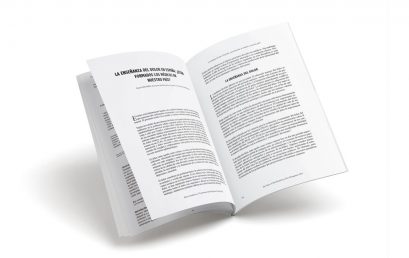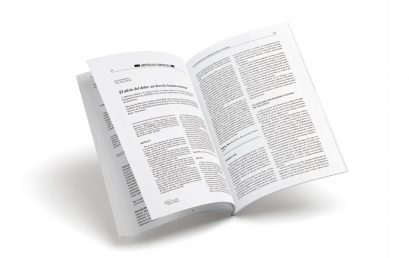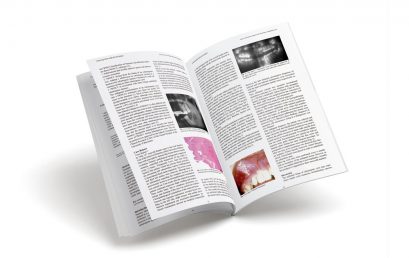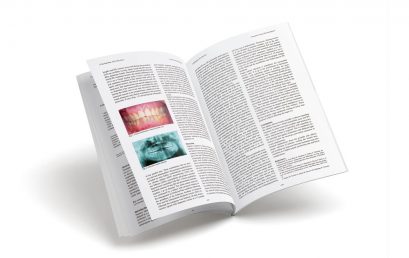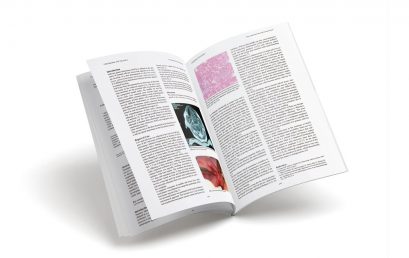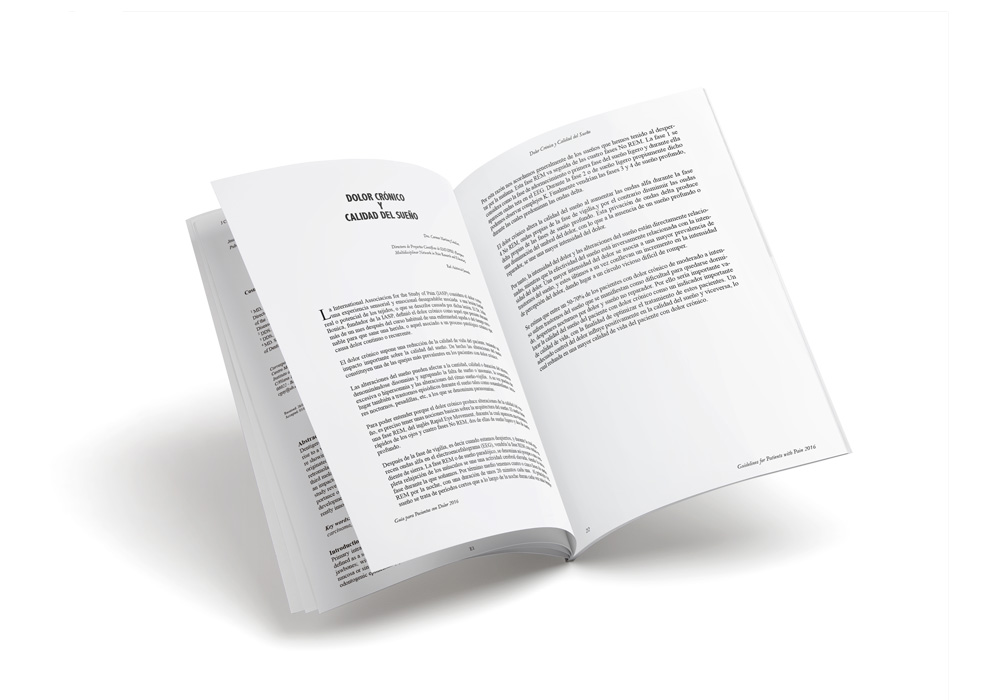
Estudio EMNIPRE: dolor crónico y calidad del sueño. Resultados definitivos
Se estima que entre un 50-70% de los pacientes con dolor crónico de moderado a intenso sufren trastornos del sueño que se manifiestan como dificultad para quedarse dormido, despertares nocturnos por dolor y sueño no reparador.
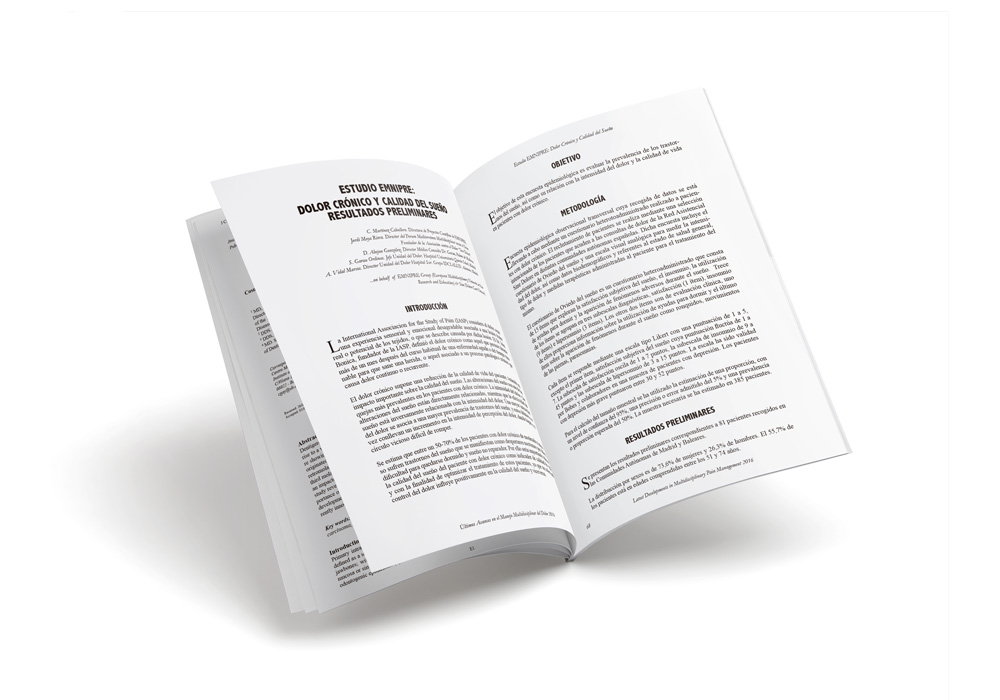
Estudio EMNIPRE Dolor Crónico y calidad del sueño: resultados preliminares
En base a los datos recogidos hasta el momento parece existir una relación clara entre dolor crónico y calidad del sueño
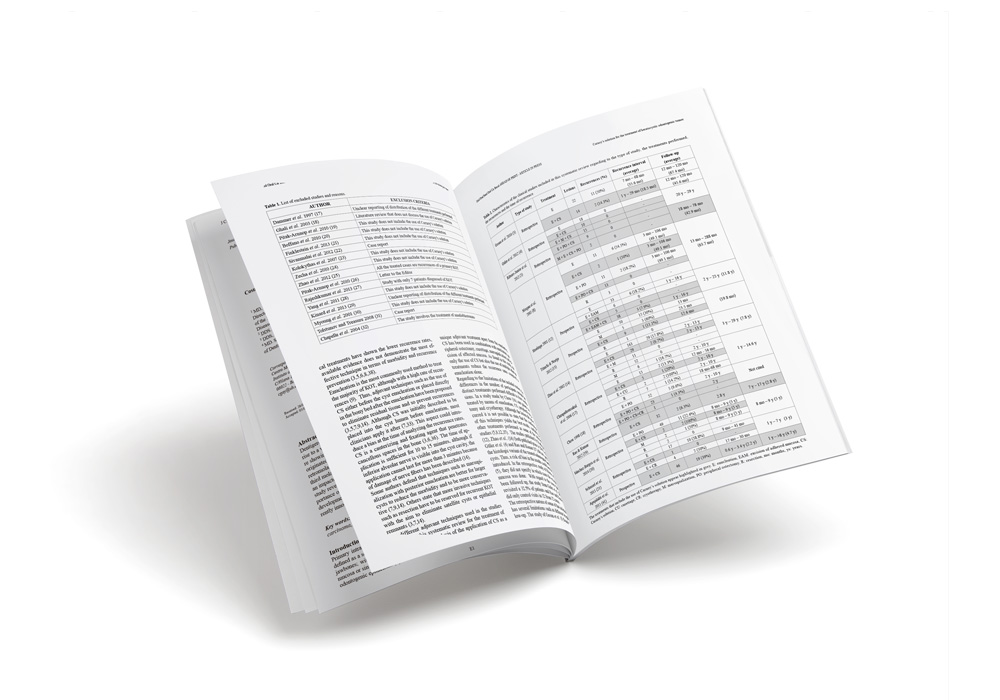
Role of carnoy’s solution in the treatment of keratocystic odontogenic tumor: A systematic review
Introduction and Objective: The keratocystic odontogenic tumor is a benign but aggressive neoplasm. As enucleation alone obtains high recurrence rates, some adjuvant treatments such as Carnoy’s solution have been proposed. The aim of this study is to evaluate the reduction of recurrences with the use of Carnoy’s solution as adjuvant in the treatment of keratocystic odontogenic tumors. Material and Methods: An electronic search in Pubmed (MEDLINE), ScienceDirect and Cochrane databases was conducted with the key words “odontogenic keratocyst”, “keratocystic odontogenic tumor”, “carnoy’s solution”, “treatment” and “enucleation”. The inclusion criteria were clinical studies using Carnoy’s solution as adjuvant for the treatment of keratocystic odontogenic tumors, published in English, including at least 10 patients. Articles with an unclear reporting of the treatment applied, nonhuman studies, case reports and lesions associated to Gorlin-Goltz syndrome were excluded. Results: All the studies included were case series. The recurrence rate of enucleation ranged from 0% to 58.8%. With the only use of Carnoy’s solution as adjuvant treatment to the enucleation, recurrences varied from 0% to
100%. The use of ≥ 2 adjuvant treatments reduced the range between 0% and 7.9%. Conclusions: The use of Carnoy’s solution as adjuvant therapy for the treatment of keratocystic odontogenic tumor
has a grade C recommendation.
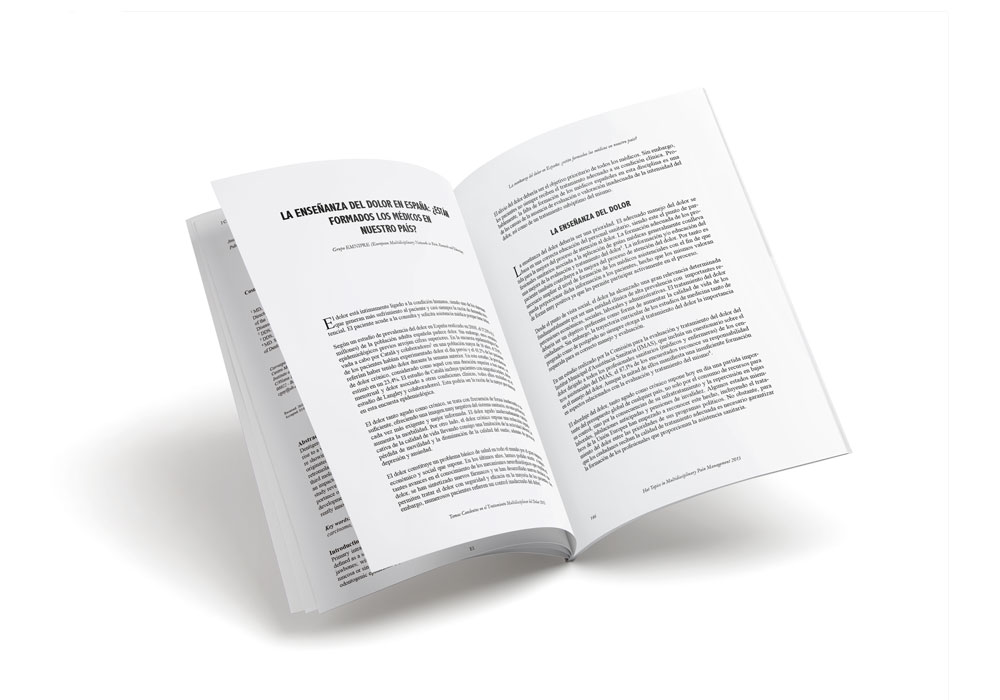
La enseñanza del dolor en España: ¿están formados los médicos en nuestro país?
El dolor tanto agudo como crónico, se trata con frecuencia de forma inadecuada e insuficiente, ofreciendo una imagen muy negativa del sistema sanitario, en una población cada vez más exigente y mejor informada.
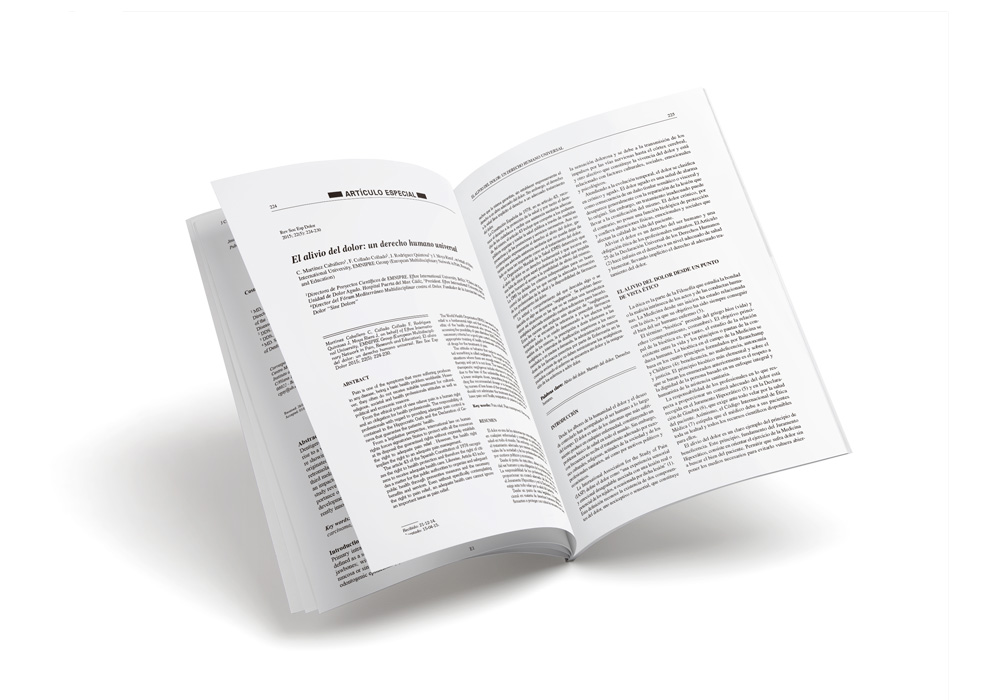
El alivio del dolor: un derecho humano universal. Pain relief: an universal human right
Desde el punto de vista ético, aliviar el dolor es un derecho del ser humano y una obligación de los profesionales sanitarios. La responsabilidad de los profesionales en lo que respecta a proporcionar un control adecuado del dolor está recogida en el Juramento Hipocrático y en la Declaración de Ginebra, que exige ante todo velar por la salud del paciente.
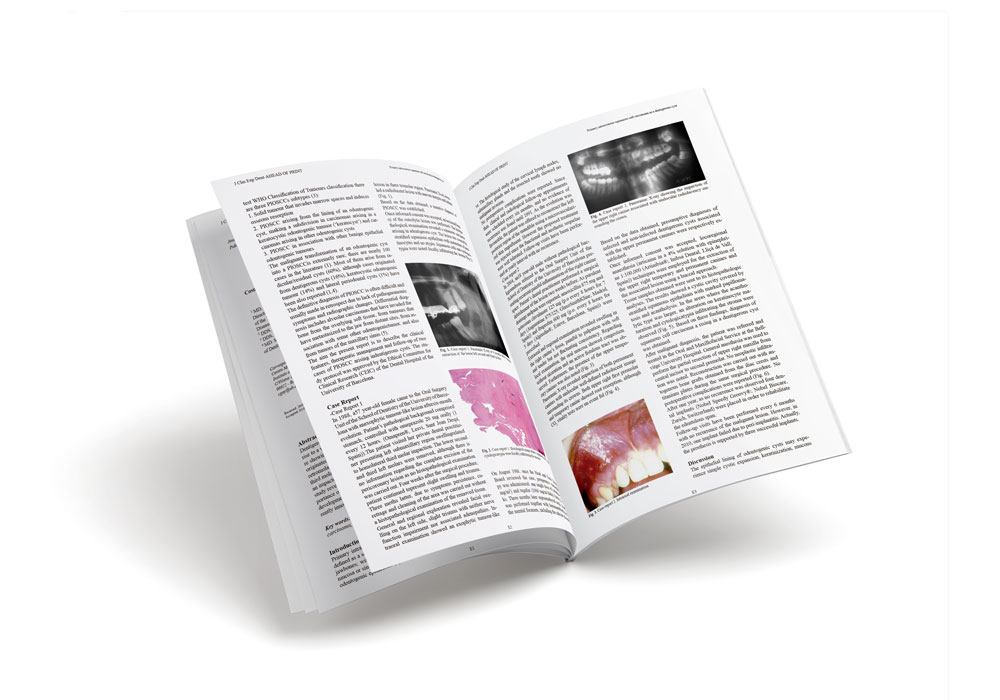
Primary intraosseous squamous cell carcinoma arising in dentigerous cyst: Report of 2 cases and review of the literature.
Dentigerous cysts are one of the most common odontogenic cysts of the oral cavity. Odontogenic cysts can give
rise to a variety of neoplasms. Carcinoma arising in a dentigerous cyst is extremely rare, with a review of literature
showing near 30 cases. The present report describes 2 cases of primary intraosseous squamous cell carcinoma
originated from a dentigerous cyst. The first one refers to a 57-year old female with a persistent lesion in the left
retromolarregion and diagnosed with squamous cell carcinoma originated fromthe incomplete excision of the lower
third molar follicle during its surgical extraction. The second case describes the case of an 18-year old male with
an impacted upper canine with previous history of infection and swelling of the oral cavity. The histopathological
study revealed the malignization of the follicle surrounding the dental crown. These two cases confirmed the importance
of the histopathological study of all the tissue samples obtained from surgical procedures. Although the
development of a malignant lesion from a dentigerous cyst is rare and its clinical-radiological features are apparently
innocuous, this entity should be considered as a differential diagnosis.
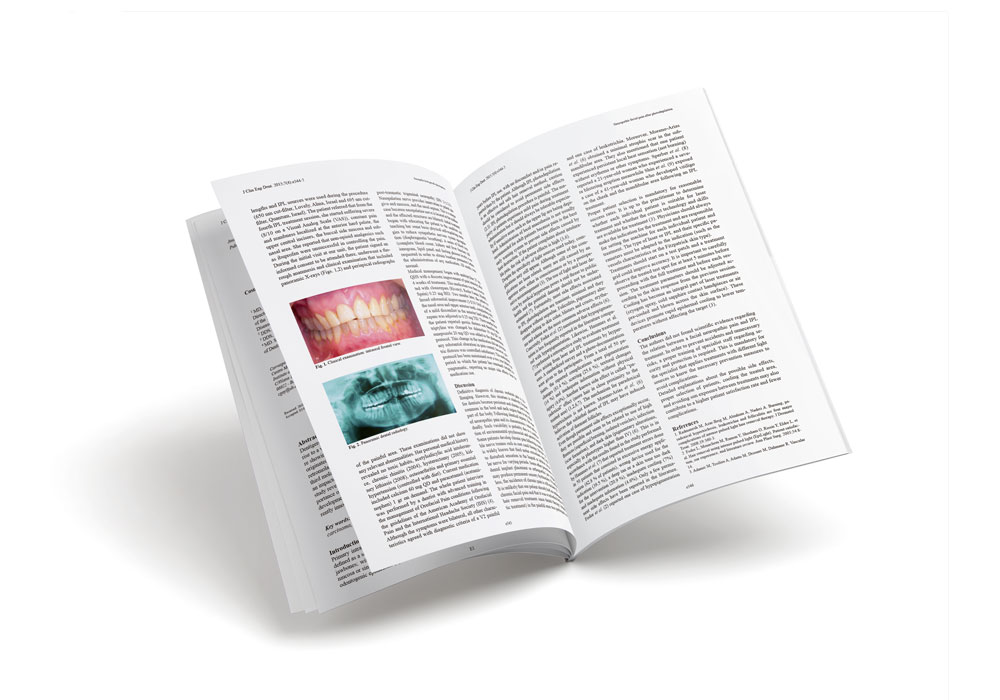
Chronic neuropathic facial pain after intense pulsed light hair removal. Clinical features and pharmacological management
Intense Pulsed Light (IPL) photodepilation is usually performed as a hair removal method. The treatment is recommended to be indicated by a physician, depending on each patient and on its characteristics. However, the use of laser devices by medical laypersons is frequent and it can suppose a risk of damage for the patients. Most side effects associated to IPL photodepilation are transient, minimal and disappear without sequelae. However, permanent side effects can occur. Some of the complications are laser related but many of them are caused by an operator error or mismanagement. In this work, we report a clinical case of a patient that developed a chronic neuropathic facial pain following IPL hair removal for unwanted hair in the upper lip. The specific diagnosis was painful post-traumatic trigeminal neuropathy, reference 13.1.2.3 according to the International Headache Society (IHS).

Salivary gland chroristoma in the buccinator muscle: A case report and literature review.
Salivary gland choristoma (SGCh) is defined as the presence of normal salivary tissue in an abnormal location. It is a rare entity in oral and maxillofacial region and its ethiology is unknown. The typical presentation of salivary gland heterotopia is an asymptomatic mass that may or may not produce saliva. Some examples of ectopic salivary tissue in the pituitary gland, in the lymph nodes, in the middle ear, in the neck, in the jaw, in the thyroid gland, in the mediastinum and in the rectum have been documented in literature. We report the case of a 61-year-old male presented with a bilateral tumorlike mass in the cheek. The mass was painless, of fibrous consistency and had size change with time. The histological diagnosis was salivary gland choristoma in the buccinator muscle. In this article, we will revise the characteristic of salivary gland heterotopias and
we present a report case that has not been described in literature: a bilateral choristoma of salivary gland in the buccinator muscle, which should be included in the differential diagnosis of head and neck masses.
